A Comprehensive Guide to Buying Aggressive Inline Skates

Aggressive skating revolves around creative self-expression and innovation. Your selection of aggressive skates is crucial for your skating experience. Here, we provide numerous helpful tips and recommendations for those looking to purchase new aggressive inline skates.
Overview
Overview
Sizing Your Aggressive Inline Skates
When selecting the size for aggressive skates, it's vital not to simply choose a size identical to your shoes. Use a tape measure to ascertain the precise length of your longest foot.
With an accurate foot length measurement, locating the correct size becomes straightforward. Each aggressive skate model on our homepage features a size guide, enabling you to identify the right size based on your foot length. These size guides utilise millimetres, according to the Mondopoint system for easy size conversion.
Measuring Your Foot

- Stand on a firm, level surface.
- Wear the socks you use for skating.
- Place a sheet of paper flat against the wall.
- Position your heel against the wall, with your foot resting flat on the paper.
- Indicate where your longest toe reaches on the paper.
- Measure the distance from the wall or paper edge to your mark.
- Repeat this for both feet and use the larger measurement to determine your skate size.
Fit Expectations for Aggressive Skates
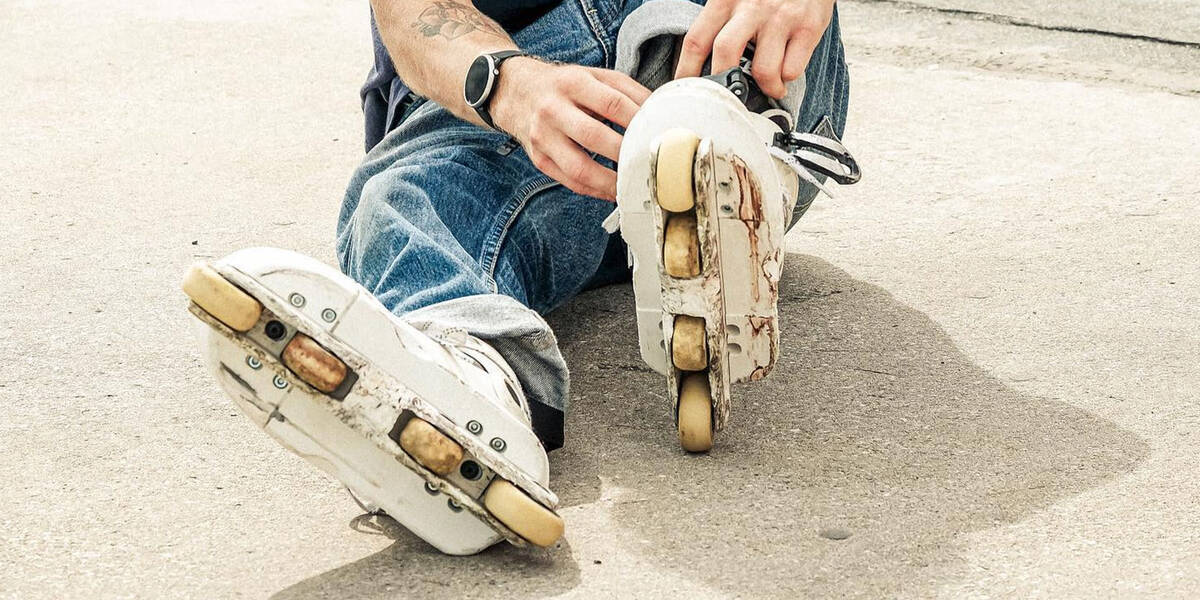
Aggressive skates should envelop your foot snugly to enhance control during stunts. Excessive space can allow foot movement within the boot, causing blisters and diminished control. Larger skates add weight, complicating tricks.
In short: A firm fit is crucial for peak performance, without compressing your foot and toes.
Breaking In Your Aggressive Skates
New aggressive skates may necessitate a breaking-in phase before achieving comfort. Keep in mind, they should fit snugly, with the liner gradually conforming to your foot shape.
Here are some suggestions for breaking in aggressive skates:
- Wear thick socks to reduce friction and prevent blisters.
- Use the skates during other activities to acclimate.
- Begin with brief sessions, extending them gradually.
- Ensure laces and buckles are fastened for a comfy fit.
One advantage of aggressive skates is the interchangeable liners when they become worn.
Understanding Aggressive Skates: Anatomy and Purpose

- Boot: Aggressive skates feature hard boots or shells.
- Frame: Durable frames intended for grinding and tough landings.
- Wheels: Small wheels that provide stability and control.
- Soul plate: To expand the array of possible grinds.
- H-block: Designed for grinding.
Aggressive skates are crafted for tricks, grinds, and jumps in urban environments and skateparks, turning all types of obstacles into opportunities for tricks and adventures. They are unmatched for grinding – no other skate type is constructed for this purpose.
These skates utilise smaller wheels than other inline skates, which lowers the centre of gravity, improving control. The small wheels enhance agility and manoeuvrability, allowing for diverse tricks. However, if commuting, long-distance skating, urban speed skating, or fitness-driven skating is your goal, skates with larger wheels are necessary.
Selecting the Right Wheels for Aggressive Skating

Critical elements of aggressive wheels include diameter, hardness, and profile. These aspects decisively impact your skating experience.
Fine-tuning these elements to match your style and preferred terrain lets you maximise the potential of your aggressive skates.
Selecting Aggressive Skate Wheel Diameter
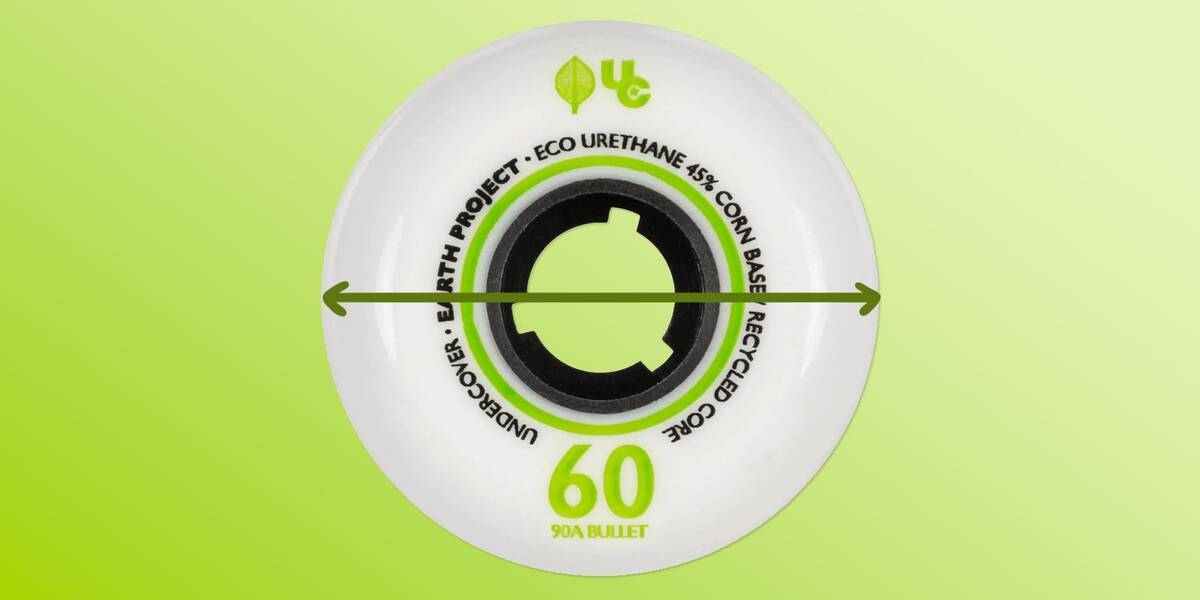
Aggressive skate wheels typically range between 56-60 mm, although they may vary from 54 to 80 mm.
- Larger wheels (60-80 mm): Quicker, but less stable, complicating technical tricks.
- Smaller wheels (56-58 mm): Offer more stability but at reduced speeds.
If seeking standard-sized wheels for aggressive skates, consider a model featuring 58 or 60 mm wheels.
Wheel Profiles for Aggressive Skates

Aggressive inline wheels are usually flat but can be rounded or pointy.
- Flat profile: More stability and easier control when landing tricks.
- Rounded profile: Provides agility with less grip, lessening the likelihood of wheel bite on rails.
- Pointy profile: Ensures speed, with easier turns due to reduced friction (uncommon in aggressive skating).
For aggressive skating involving frequent tricks, flat wheels are generally advised. For increased agility and speed, a rounder profile could be beneficial.
Decoding Wheel Hardness on Aggressive Skates
The hardness of aggressive skate wheels is gauged on the durometer scale, typically ranging from 86A to 95A. A higher durometer indicates harder wheels.
- Harder wheels: Faster on smooth terrains but offer less vibration absorption, making uneven surfaces problematic. Facilitate sliding and minimise wheel bite during grinds.
- Softer wheels: Provide stability, better absorption, and enhanced surface grip.
Weigh the benefits of harder versus softer wheels against your personal skating style and preferences.
Configurations of Wheels on Aggressive Skates
Aggressive skates either feature a flat or anti-rocker wheel setup, defined by the underside line when wheels are mounted. The setup significantly influences the riding experience, making it a vital consideration when selecting new aggressive inline skates.
Understanding Anti-Rocker Setup
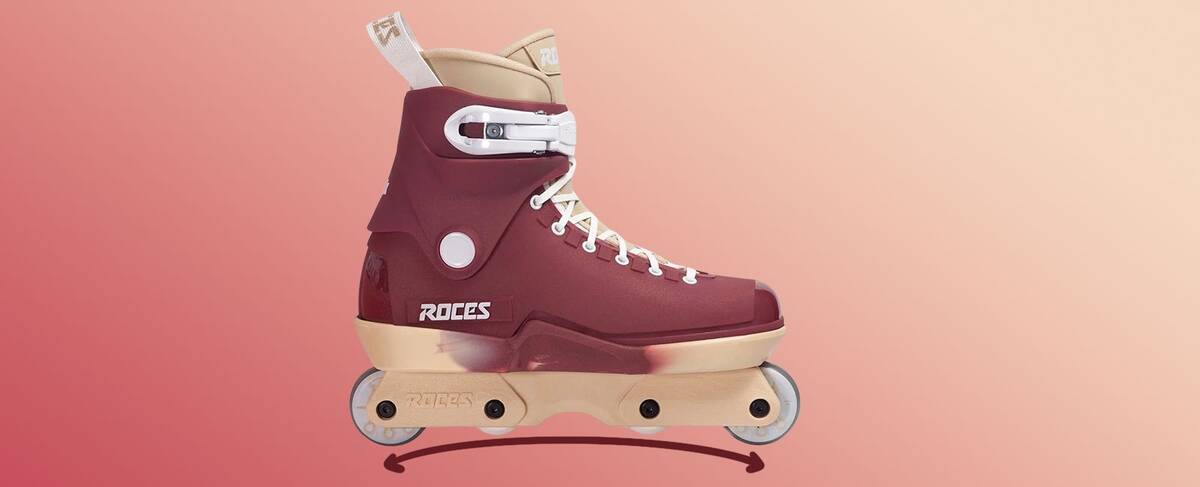
In anti-rocker setups, larger wheels are positioned at the front and back, with smaller wheels in the middle for grinding space. These setups have reduced turning ease compared to flat alternatives. The anti-rocker setup establishes two contact points, complicating turns compared to flat or rocker styles. If discouraged by anti-rocker rigidity but still keen on grinding and aggressive skating, a flat setup might be more suitable.
Defining Anti-Rocker Wheels
Anti-rocker wheels are the two central wheels on aggressive skates with an anti-rocker setup. They are smaller, often significantly harder than outer wheels, and do not make ground contact during movement. They prevent interference with grinds while improving locking onto grinds. Made from a hard PU mixture, they minimise sticking to rails.
The name “anti-rocker” is due to the smaller wheel size, forming an upward groove between the ground and wheels. This contrasts with a rocker setup, with smaller outer wheels than the middle ones, facilitating a rocking motion.
Are Bearings Necessary for Anti-Rocker Wheels?
Bearings in anti-rocker wheels can be advantageous for activities like stairbashing, allowing smooth rolling on stairs. Also termed grind wheels, they prevent sticking to rails during grinds, so bearings aren't essential. Some anti-rocker wheels have bearings, whereas others don't.
What Constitutes a Flat Setup for Aggressive Skates?
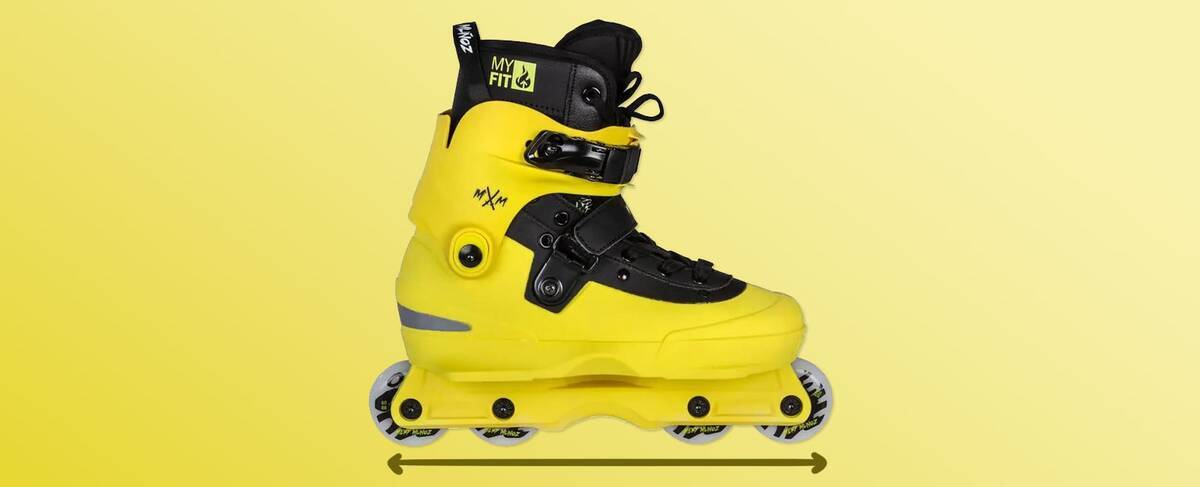
Flat setups feature wheels of equal size, improving speed and agility compared to anti-rocker setups. Conducting groove grinds is more demanding due to the increased rail-sticking risk from the middle wheels. Not all frames can handle flat setups due to space constraints for middle wheels.
If you're new to aggressive skating, a flat setup is a recommended introduction. Numerous seasoned skaters also favour flat setups for the style and challenge, demanding precision in H-block grinds.
Comparing Flat and Anti-Rocker Setups
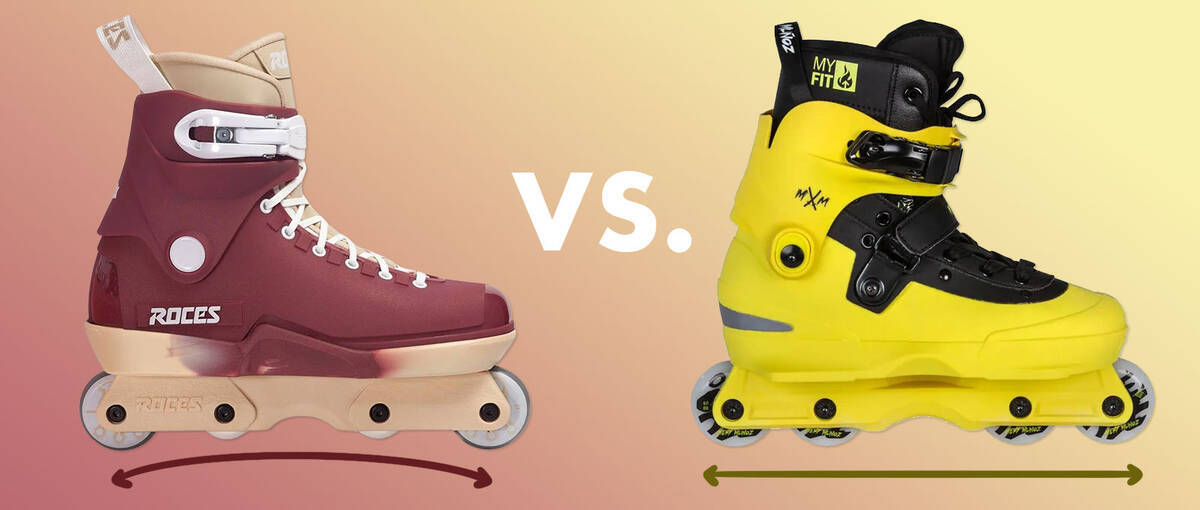
Whether you're a beginner or expert, choosing between an anti-rocker or flat setup is ultimately a matter of personal taste. Neither is inherently superior.
Consider the following when unsure of the best setup for new skates:
- Groove Grinds with Anti-Rocker: Smaller wheels minimise biting during H-block grinds.
- Groove Grinds with Flat Setups: Require greater precision, offering potentially more stylish grinds.
- Speed: Flat setups are faster than anti-rocker setups.
- Agility: Turning is more graceful on flat setups, with smoother rides in bowls and parks.
- Beginners on Inline Skates: Learning to skate is easier on flat setups.
- Beginners on Aggressive Skates: Learning to grind is simpler with anti-rocker setups. For those familiar with inline skating, an anti-rocker setup may be better for easier grinding.
Ultimately, the top choice depends upon your skating technique and focus areas, and whether you're a newcomer to inline skating or have significant experience and are transitioning to aggressive skates.
Aggressive Skate Frame Insights

The core functions of aggressive skate frames are to secure the wheels and act as a grinding platform. As grinding is fundamental to aggressive skating, frames form a crucial part of selecting the ideal aggressive skates.
Aggressive frames are crafted from robust materials like aluminium, fibreglass, or composites to endure the demands of aggressive skating. Nearly all frames adhere to the Universal Frame System (UFS) for compatibility across aggressive boot brands.
```htmlCertain aggressive frames are crafted for a particular wheel configuration, whereas others can support various setups. If your skates come with a flat wheel configuration, transforming them into an anti-rocker setup can be achieved by fitting smaller wheels in the centre, enhancing your grinding abilities.
Not all frames support a flat configuration, thus transitioning from an anti-rocker setup to a flat one needs thoughtful assessment. You can use a calliper to measure if it’s doable, though it’s often simpler to verify the manufacturer’s details. Confirm the frames are stated as compatible with a flat setup, then review the maximum wheel diameter and select a set of eight wheels that meet or are under this limit for your frame.
Understanding the Universal Frame System
All UFS frames can be exchanged with any other UFS frame, regardless of the brand or size.
Owing to nearly universal adherence to the Universal Frame System (UFS), worn frames can be effortlessly swapped, helping sustain your skates’ lifespan and performance.
The Universal Frame System (UFS) serves as the standard method for fixing frames and boots on aggressive skates. UFS facilitates mixing and matching boots and frames, allowing for a personalised aggressive skate configuration. Replacing frames on a UFS boot is uncomplicated, as aggressive skate makers have universally accepted this standard.
Universal Frame System (UFS) Details
- Space Between Mounting Holes: 167mm
- UFS Mounting Hole Diameter: 20mm
- UFS Mounting Hole Depth: 3mm
- UFS Frame Width: 41mm
- Mounting Mechanism: The frames are secured with two bolts fastened into the mounting holes
The bolt length for UFS can differ from one frame to another. While the distance between mounting holes is consistent for all models, UFS does not specify the frame lengths.
Defining Soul Plates

Soul plates are a distinctive element of aggressive skates, intended for grinding and shielding the skates from wear. Positioned between the frames and boots of aggressive skates, they are constructed from robust plastic materials.
They are crucial for the skate’s functionality, enabling smooth grinding on diverse surfaces. The soul grind is one of the initial techniques for beginners to master, involving the skate closest to the rail grinding on the soul plate, while the other leg extends forward and grinds on the H-block. One of the primary challenges for new aggressive skaters is getting the soul plate to lock onto curbs or rails.
Bearings in Aggressive Skates
Bearings within the wheels of aggressive skates play a critical role in ensuring smooth rotation. Given the high-impact nature of aggressive skating, bearings need regular replacement to maintain optimal performance for executing stunts. Fresh bearings guarantee a smooth roll, essential for reaching top performance in tricks. Bearings are conveniently available as spare components for replacement purposes.
At SkatePro, bearings are classified according to the ABEC scale, which spans from 1 to 9, assessing precision. Typically, a higher ABEC rating translates to a smoother roll experience.
It’s important to note the ABEC rating alone doesn’t indicate a bearing’s durability. Hence, we suggest opting for bearings from well-known brands rather than solely focusing on the ABEC rating.
Are Aggressive Skates Suitable for Inline Skating Beginners?
Aggressive skates might suit beginners without prior inline skating experience, especially if your goal is aggressive skating. For interests in fitness, freeride, marathons, or other inline disciplines, it’s wise to explore other skate types. However, if keen on aggressive blading, your initial inline skates ought to be aggressive skates. Consider these points:
- Stability: With smaller wheels, aggressive skates offer enhanced stability, aiding beginners. This stability eases the learning of basic inline skating skills.
- Terrain: Aggressive skates are ill-suited for rugged or uneven surfaces due to their smaller wheels and weightier design. This limitation is a primary reason for recommending aggressive skates primarily for aggressive skating enthusiasts.
- Flat Setup: For those unfamiliar with inline skates, a flat wheel setup with all eight wheels of identical diameter should be chosen. This configuration simplifies learning strides and provides a smooth rolling experience.
If you’re not completely certain if aggressive inline skates are right for you, consider exploring more about the various types of inline and roller skate
